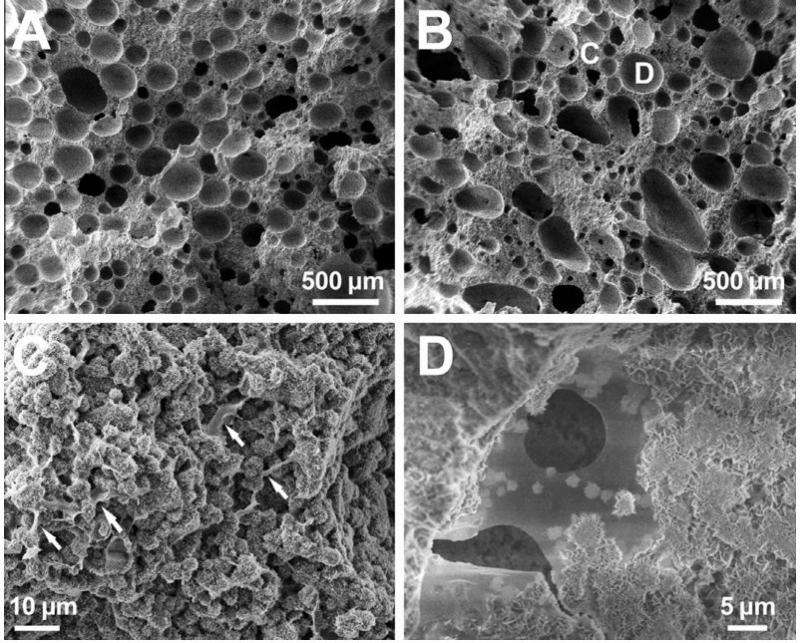December 23, 2015 report
New calcium phosphate foam could help repair damage due to osteoporoses

(Phys.org)—A team of researchers affiliated with several institutions in France has developed a type of injectable foam that may serve as a means for treating osteoporoses and other bone degenerative diseases. The team has published a paper in the journal Acta Biomaterialia describing how they came up with the foam, how it works and the uses to which it might be put.
For over a century, surgeons have used various types of calcium phosphate cements (CPCs) to repair bones that have been damaged due to trauma, which has worked very well for a variety of circumstances. One area where they have not worked well, however, has been in repairing bone that has degenerated due to diseases such as osteoporoses. The problem has been that conventional CPCs are microporous, but not macroporous—the difference is in the size of air cavities inside of the material. To be useful for repairing bones that have degenerated, the cavities need to be larger than 50 nanometers. In this new effort, the research team reports that the foam they have developed meets that criterion.
The foam was made by putting a silanised-hydroxypropyl methylcellulose hydrogel in one syringe and a conventional CPC in another syringe. After pumping air into the CPC syringe, the two syringes were connected together and then both plungers were pushed simultaneously, causing the two to mix, along with air. The result was cavity formation evenly throughout the merged material. The resulting foam was tested by nicking the bones of test rabbits and then injecting the foam into the area to see if it would fill in the missing bone area, serving as a place-holder while new bone grew in to fill the gap. The researchers report that there was no noticeable toxic impact on the rabbits and that new bone grew as hoped into the injured sites, offering hope that it could be used to repair similar injuries in humans and perhaps even as a method for rejuvenating bone that has deteriorated due to disease.
The team plans to conduct more testing of the material with the goal of taking it to clinical trials one day soon as both a tool for treating traumatized bones and for helping people with bone diseases.
More information: A simple and effective approach to prepare injectable macroporous calcium phosphate cement for bone repair: Syringe-foaming using a viscous hydrophilic polymeric solution, Acta Biomaterialia, Available online 26 November 2015. DOI: 10.1016/j.actbio.2015.11.055
Abstract
In this study, we propose a simple and effective strategy to prepare injectable macroporous calcium phosphate cements (CPCs) by syringe-foaming via hydrophilic viscous polymeric solution, such as using silanized-hydroxypropyl methylcellulose (Si-HPMC) as a foaming agent. The Si-HPMC foamed CPCs demonstrate excellent handling properties such as injectability and cohesion. After hardening the foamed CPCs possess hierarchical macropores and their mechanical properties (Young's modulus and compressive strength) are comparable to those of cancellous bone. Moreover, a preliminary in vivo study in the distal femoral sites of rabbits was conducted to evaluate the biofunctionality of this injectable macroporous CPC. The evidence of newly formed bone in the central zone of implantation site indicates the feasibility and effectiveness of this foaming strategy that will have to be optimized by further extensive animal experiments.
Journal information: Acta Biomaterialia
© 2015 Phys.org

















